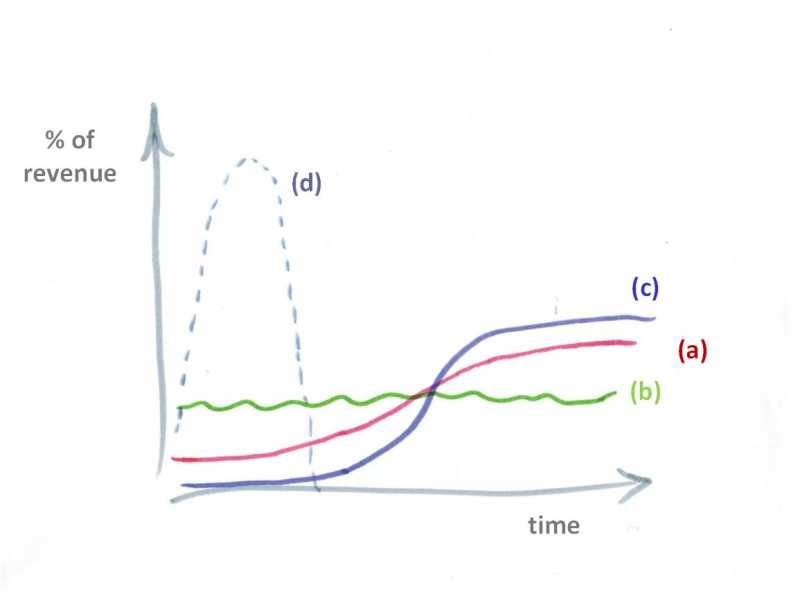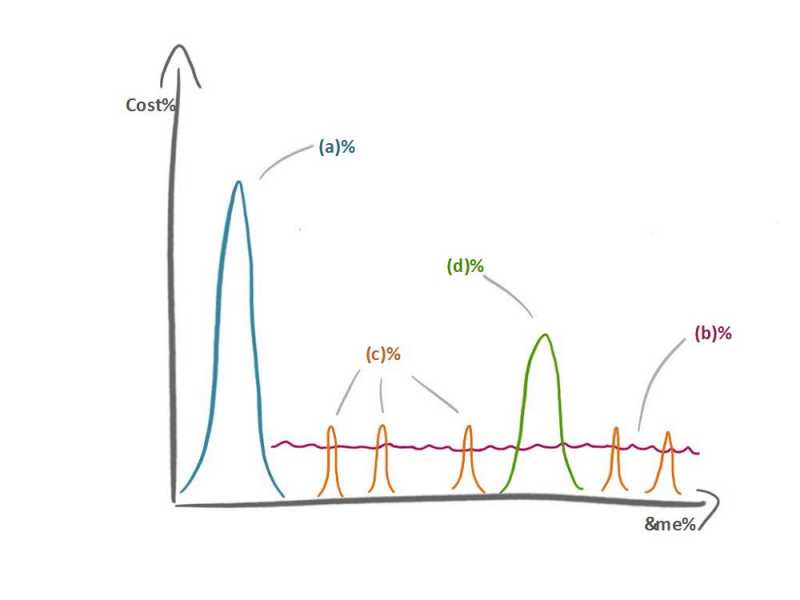- Forum
- categories
- Markets, finance and governance
- Cities (planning, implementation, and management processes)
- Various thematic discussions (time bound) - 5
- Urban Sanitation Finance - From Macro to Micro Level (June/July 2015, Thematic Discussion 2)
- Theme 3 of TD 2: City level sustainable cost recovery
- City level sustainable full cost recovery - How to ensure finances for services for the entire city and entire sanitation chain?
City level sustainable full cost recovery - How to ensure finances for services for the entire city and entire sanitation chain?
42.9k views
Please find also the attached powerpoint with figures relevant for this discussion.
best,
Antoinette
best,
Antoinette
Antoinette Kome
Global Sector Coordinator WASH
SNV Netherlands Development Organisation
Global Sector Coordinator WASH
SNV Netherlands Development Organisation
This message has an attachment file.
Please log in or register to see it.
Please Log in to join the conversation.
You need to login to replyCity level sustainable full cost recovery - How to ensure finances for services for the entire city and entire sanitation chain?
Dear colleagues,
I’m very pleased to be part of this thematic discussion on urban sanitation finance. We have already seen different ideas about national level public finance and micro-finance. In this third block we will be looking at city level sanitation financing, and how a local government or local utility can make progress to ensure access for all people in their area.
In many countries, the responsibility for urban sanitation lies with local governments or local utilities. The main challenge felt by local governments and/or utilities is how to finance upfront investment (eg. treatment) if revenue streams are uncertain. This is a big risk. Therefore the questions we would like to ask for this discussion are:
1) How to support local governments and/or utilities to blend different sources of finance to improve or set up urban sanitation services for their city?
2) How to overcome challenges in access to repayable finance for urban sanitation?
3) What are your experiences and thoughts about combining the 4Ts to finance sanitation services?
Below you find a short background for these questions. Of course you are free to add any other issues related to city level sanitation financing.
Looking forward to your ideas, and experiences,
Antoinette
BACKGROUND TO TOPIC 3 QUESTIONS
As mentioned above, the main challenge felt by many local governments and/or utilities is how to finance upfront investment (in treatment mostly) if revenue streams are uncertain. As we have seen in the previous blocks of this discussion, revenue streams could include:
a) revenue from tariffs paid by users for the sanitation service
b) revenue from taxes paid by all citizens for e.g. ensuring the cleanliness of their city
c) revenue from the sales of products made out of waste, such as fertilizer or energy (“re-use”)
d) revenue from transfers by the national government to local levels or from grants.
We are calling these 4 types of revenues the 4T’s: Tariffs, Taxes, Transfers and Trade (= sale of re-use products).
The tricky thing is of course that the expenses for large infrastructure are upfront expenses, whereas the above incomes through Tariffs, Taxes and Trade will take time to develop. Hence, nobody wants to take the risk.
Revenue streams
Expenditures
Also, experience has also shown that, even when upfront investment is funded through grants, there is often not sufficient incentive to develop revenue streams for O&M, let alone rehabilitation. Typical expenditures that a sanitation service will face are:
a) large upfront costs for the initial investment in infrastructure,
b) ongoing costs for operating services
c) larger intermittent maintenance requirements (such as repairing/replacing a pump, or desludging), and
d) large costs for asset renewal as infrastructure elements approach the ends of their lives.
Sustainable full cost recovery at city level tries to look at this challenge from three dimensions, namely:
• How to ensure finances for services for the entire city? (different geographic areas, different socio-economic situations, different service challenges)
• How to ensure finances for services addressing the entire sanitation value chain?
• How to ensure finances for services that last over time?
There are examples, like the case of the water district in Baliwag in the Philippines, that I recently visited, where the utility themselves took the initiative to fund their upfront investment in treatment through a commercial loan. However, in many cases, the local governments and/or utilities lack the examples, support and options to mobilize the finances to set up an urban sanitation services. In the Learning Paper that is the pre-reading for this topic www.susana.org/en/resources/library/details/2185, we have tried to document examples of how different sources of finances can be combined (“blended”) to achieve sustainable full cost recovery. You will notice though that there are not that many examples, therefore we are keen to hear any additional examples from you.
I’m very pleased to be part of this thematic discussion on urban sanitation finance. We have already seen different ideas about national level public finance and micro-finance. In this third block we will be looking at city level sanitation financing, and how a local government or local utility can make progress to ensure access for all people in their area.
In many countries, the responsibility for urban sanitation lies with local governments or local utilities. The main challenge felt by local governments and/or utilities is how to finance upfront investment (eg. treatment) if revenue streams are uncertain. This is a big risk. Therefore the questions we would like to ask for this discussion are:
1) How to support local governments and/or utilities to blend different sources of finance to improve or set up urban sanitation services for their city?
2) How to overcome challenges in access to repayable finance for urban sanitation?
3) What are your experiences and thoughts about combining the 4Ts to finance sanitation services?
Below you find a short background for these questions. Of course you are free to add any other issues related to city level sanitation financing.
Looking forward to your ideas, and experiences,
Antoinette
BACKGROUND TO TOPIC 3 QUESTIONS
As mentioned above, the main challenge felt by many local governments and/or utilities is how to finance upfront investment (in treatment mostly) if revenue streams are uncertain. As we have seen in the previous blocks of this discussion, revenue streams could include:
a) revenue from tariffs paid by users for the sanitation service
b) revenue from taxes paid by all citizens for e.g. ensuring the cleanliness of their city
c) revenue from the sales of products made out of waste, such as fertilizer or energy (“re-use”)
d) revenue from transfers by the national government to local levels or from grants.
We are calling these 4 types of revenues the 4T’s: Tariffs, Taxes, Transfers and Trade (= sale of re-use products).
The tricky thing is of course that the expenses for large infrastructure are upfront expenses, whereas the above incomes through Tariffs, Taxes and Trade will take time to develop. Hence, nobody wants to take the risk.
Revenue streams
Expenditures
Also, experience has also shown that, even when upfront investment is funded through grants, there is often not sufficient incentive to develop revenue streams for O&M, let alone rehabilitation. Typical expenditures that a sanitation service will face are:
a) large upfront costs for the initial investment in infrastructure,
b) ongoing costs for operating services
c) larger intermittent maintenance requirements (such as repairing/replacing a pump, or desludging), and
d) large costs for asset renewal as infrastructure elements approach the ends of their lives.
Sustainable full cost recovery at city level tries to look at this challenge from three dimensions, namely:
• How to ensure finances for services for the entire city? (different geographic areas, different socio-economic situations, different service challenges)
• How to ensure finances for services addressing the entire sanitation value chain?
• How to ensure finances for services that last over time?
There are examples, like the case of the water district in Baliwag in the Philippines, that I recently visited, where the utility themselves took the initiative to fund their upfront investment in treatment through a commercial loan. However, in many cases, the local governments and/or utilities lack the examples, support and options to mobilize the finances to set up an urban sanitation services. In the Learning Paper that is the pre-reading for this topic www.susana.org/en/resources/library/details/2185, we have tried to document examples of how different sources of finances can be combined (“blended”) to achieve sustainable full cost recovery. You will notice though that there are not that many examples, therefore we are keen to hear any additional examples from you.
Antoinette Kome
Global Sector Coordinator WASH
SNV Netherlands Development Organisation
Global Sector Coordinator WASH
SNV Netherlands Development Organisation
Attachments:
-
 incomestreams6.jpg
(Filesize: 15KB)
incomestreams6.jpg
(Filesize: 15KB)
-
 expenditures.jpg
(Filesize: 17KB)
expenditures.jpg
(Filesize: 17KB)
The following user(s) like this post: hajo, dwumfourasare, HAPitot, Katrin
Please Log in to join the conversation.
You need to login to reply
Share this thread:
- Forum
- categories
- Markets, finance and governance
- Cities (planning, implementation, and management processes)
- Various thematic discussions (time bound) - 5
- Urban Sanitation Finance - From Macro to Micro Level (June/July 2015, Thematic Discussion 2)
- Theme 3 of TD 2: City level sustainable cost recovery
- City level sustainable full cost recovery - How to ensure finances for services for the entire city and entire sanitation chain?
Recently active users. Who else has been active?
Time to create page: 0.134 seconds







